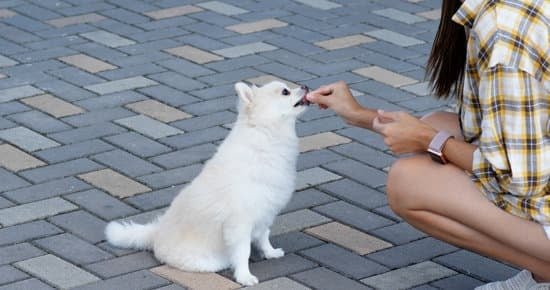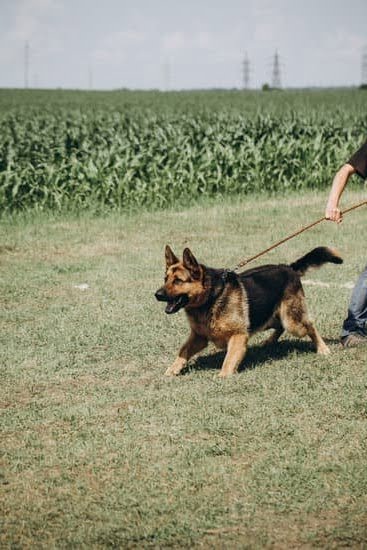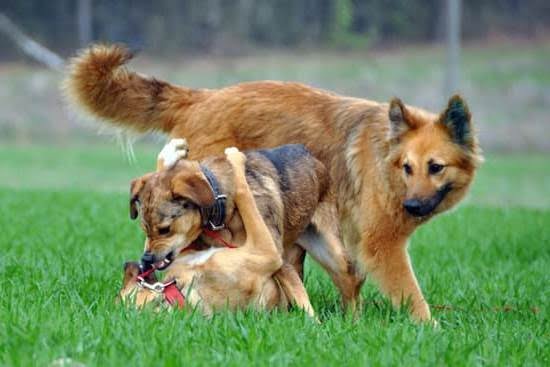In the world of dog training, one method that has gained significant popularity and success is clicker training. Using a small handheld device that emits a distinct clicking sound, trainers are able to communicate with their dogs in a precise and consistent manner.
But what exactly is clicker training and how can it be utilized to teach your furry friend the essential skill of staying put? In this comprehensive guide, we will explore the power of clicker training in teaching dogs to stay.
Clicker training is based on the principles of positive reinforcement, where desirable behaviors are rewarded and reinforced. The clicker acts as a powerful tool in this process, serving as an immediate marker for when your dog exhibits the desired behavior. This instant feedback helps your canine companion understand exactly which action you want them to repeat in order to receive a reward.
Teaching your dog to stay is not only beneficial for everyday situations such as ensuring their safety or preventing food theft from countertops; it also lays the groundwork for building trust and obedience between you and your loyal companion. By mastering the art of teaching your dog to stay using a clicker, you can establish a strong foundation for more advanced commands and behaviors.
In the following sections, we will delve deeper into the world of clicker training, starting with understanding its basics and principles. We will also help you set up an optimal training environment, provide step-by-step instructions on introducing the clicker sound to your dog, cover basic commands that contribute to teaching stay, and offer troubleshooting tips for dealing with common challenges. Additionally, we will guide you on how to gradually reinforce stay commands by adding distractions and extending duration.
Training your dog takes time, patience, and consistency. However, by consistently applying the techniques outlined in this guide while celebrating small victories along the way, you will soon have a well-trained canine friend who excels at staying put – all thanks to the power of clicker training. So let’s get started on this rewarding journey of teaching your dog to stay with the help of a clicker.
Understanding the Basics of Clicker Training
A clicker is a small handheld device that emits a distinct clicking sound when pressed. In clicker training, the click serves as a bridge between the desired behavior and the reward that follows. The concept behind clicker training is known as operant conditioning, which involves reinforcing behaviors through positive reinforcement.
The click serves as a marker to indicate to the dog that they have performed the correct behavior. This is important because dogs may not understand why they are being rewarded if the reward is delayed or if there are other distractions present. The click helps to clearly communicate to the dog what behavior was correct and reinforces their understanding of what is expected of them.
To begin using the clicker in training, you will need to first introduce your dog to the sound and associate it with something positive. This can be done by clicking the clicker and immediately offering a treat or praise. Repeat this process several times until your dog begins to make a connection between the sound of the click and receiving a reward.
Once your dog understands that the click means they have performed correctly, you can begin using it during training sessions for specific behaviors. For example, if you are teaching your dog to sit, you would wait for them to perform the desired behavior and then immediately press the clicker followed by giving them a treat.
In addition to its effectiveness in teaching new behaviors, clicker training has several advantages over other forms of training. One major advantage is that it allows for clear communication between you and your dog without relying on punishment or physical corrections. It also encourages dogs to actively participate in their own learning process, making training more enjoyable for both parties involved.
Using a clicker can be especially beneficial for teaching complex behaviors or shaping precise movements because it allows for precise timing and feedback. It also helps to build focus and attention in your dog, as they learn to listen for the sound of the click before receiving their reward.
Overall, understanding how a clicker works and the principles behind clicker training is essential for successful dog training. With this foundation, you can effectively communicate with your dog and teach them a wide range of behaviors using positive reinforcement techniques.
Preparing for Success
In order to successfully train your dog to stay with a clicker, it is crucial to create a training environment that is conducive to learning. This section will emphasize the importance of a distraction-free environment, provide tips on selecting the ideal location for training sessions, and discuss the necessary equipment for clicker training.
A distraction-free environment is essential when teaching your dog new commands. Minimizing distractions allows your dog to focus solely on the training session and increases their chances of understanding and retaining the information. It is recommended to choose a quiet space without any external noises or visual stimuli that could divert your dog’s attention.
When selecting the location for training sessions, consider both indoor and outdoor environments. Indoor spaces can be great for beginners as they offer more control over distractions. A designated room or area in your house works well for this purpose. On the other hand, outdoor locations such as a fenced yard or an empty park can be beneficial for gradually introducing distractions in later stages of training.
Apart from creating an ideal training environment, having the right equipment is crucial for successful clicker training. The main tool needed is a clicker device, which produces a distinct sound that communicates positive reinforcement to your dog. Clickers are easily available online or at pet stores and are an effective way to establish communication with your dog during training sessions.
Additionally, it is useful to have treats as rewards for your dog’s good behavior during clicker training. High-value treats that your dog finds particularly enticing can often encourage quicker learning and motivation. It is important to use small and easily consumable treats during training sessions to prevent interruptions or delays in practice.
Creating an optimal training environment by minimizing distractions, selecting suitable locations, and ensuring you have necessary equipment sets you up for success when teaching your dog to stay with a clicker. By providing a focused and controlled setting, you can effectively communicate with your dog and facilitate their learning process.
| Training Environment Tips: |
|---|
| Choose a distraction-free space |
| Select an indoor or outdoor location based on your dog’s training level |
| Use a clicker device and high-value treats for positive reinforcement |
Getting Started
Teaching your dog the clicker connection is an essential first step in using clicker training to teach them to stay. This section will provide a step-by-step guide on introducing the clicker to your dog and explaining the process of associating the clicker sound with positive reinforcement.
Step 1: Introducing the Clicker
The first step in teaching your dog the clicker connection is introducing them to the sound of the clicker. Start by getting their attention and making sure they are in a calm state. Press the clicker once and immediately follow it with a treat or reward. Repeat this several times, ensuring that your dog understands that the sound of the clicker is associated with something positive.
Step 2: Timing is Key
Timing is crucial when using a clicker in dog training. The click must always be followed by an immediate reward to reinforce the desired behavior. Practice timing your clicks correctly, ensuring that you mark the exact moment your dog exhibits the desired behavior you want to reinforce.
Step 3: Pairing Clicks with Rewards
Once your dog is familiar with the sound of the clicker, you can start pairing it with rewards for specific behaviors. For example, if you want to teach your dog to sit, wait for them to naturally sit down and immediately press the clicker followed by a treat. Repeat this process multiple times until your dog starts associating sitting with hearing the click and receiving a reward.
It’s important to note that consistency is key during this phase of training. Always use a consistent clicking sound and ensure that each time you use it, it is followed by a reward. With time and practice, your dog will start understanding that certain behaviors are rewarded when they hear the click, creating a strong connection between their actions and positive reinforcement.
By taking these steps to teach your dog the clicker connection, you are setting a solid foundation for their stay training using the clicker. Next, we will explore how to build upon this foundation and teach your dog basic commands that contribute to their ability to stay.
Building the Foundation
Now that you have established the clicker connection with your dog, it is time to build the foundation by teaching them basic commands. These commands are not only essential for everyday interactions but also contribute to teaching your dog to stay. Here are the key steps to follow in order to teach your dog basic commands using clicker training:
Sit Command
- Begin by luring your dog into a seated position using a treat or toy.
- As soon as they sit, click the clicker and give them the reward.
- Repeat this process several times until your dog starts associating the sit command with the sound of the clicker and receiving a reward.
- Gradually introduce verbal cues such as saying “sit” just before luring them into the position.
- Practice this command in different locations and gradually reduce the lure until your dog responds solely to the verbal cue.
Lie Down Command
- Start by having your dog in a sitting position.
- Hold a treat or toy near their nose and slowly lower it towards the ground while saying “lie down”.
- As soon as their elbows touch the ground, click the clicker and give them the reward.
- Repeat this process until your dog learns to associate lying down with both the verbal cue and clicker sound.
- Gradually reduce the lure so that your dog responds solely to the verbal cue.
Come Command
- Start by calling your dog’s name in an enthusiastic tone while taking a few steps backward.
- When your dog begins moving towards you, immediately click the clicker and give them a reward once they reach you.
- Repeat this process several times, gradually increasing distance and distractions.
- Once your dog consistently comes when called, introduce verbal cues such as saying “come” just before calling their name.
By mastering these basic commands through clicker training, your dog will develop a strong foundation that will assist them in learning the stay command. Practice these commands consistently and gradually increase the difficulty level as your dog becomes more proficient. Remember to praise and reward them each time they successfully perform a command, reinforcing their understanding and motivation to continue learning.
Progressing to Stay Commands
Starting with Short Stays
Once your dog has mastered the basic commands such as sit, lie down, and come, you can start introducing the stay command. It is crucial to begin with short stays before gradually lengthening them. This helps your dog build confidence and understand the concept of staying in one place until given permission to move.
To start, ask your dog to sit or lie down, and then use the clicker to mark the behavior. Immediately reward your dog with a treat or praise. Next, say “stay” in a firm but calm tone and take a small step back. If your dog remains in position for even just a second, use the clicker to mark this moment and provide another reward.
Progressing to Longer Stays
As your dog becomes more comfortable with short stays, you can begin extending the duration gradually. Increase the time between each click by a few seconds before giving a treat or praise. Remember to always maintain a positive and encouraging tone throughout the training session.
If at any point during training your dog breaks from the stay command, simply ignore their behavior without providing any rewards or punishment. Redirect their attention back to the original position and try again. Consistency is key in building the foundation for longer stays.
Taking Small Steps
When progressing with stay commands, it is essential to take small steps forward rather than rushing through each level of difficulty. Gradually introduce distractions while maintaining shorter durations until your dog demonstrates consistent success.
For example, start by introducing mild distractions such as a low-level noise or slight movement nearby while still keeping the duration short. As your dog becomes more proficient in staying focused despite distractions and increasing duration, you can gradually increase both factors further.
By following these techniques, you will be able to teach your dog how to stay using clicker training effectively. Remember that each canine learns at their own pace, so patience and consistency are key. With practice and positive reinforcement, your dog will master the stay command in no time.
Troubleshooting
During the process of clicker training your dog to stay, you may encounter some common challenges. These challenges are normal and can be overcome with patience and perseverance. Here are solutions and tips for dealing with these obstacles:
- Lack of Focus: If your dog is having a hard time staying focused during training sessions, it could be due to distractions in the environment. Ensure that you are training in a quiet and calm area initially, free from any potential interruptions. You can gradually introduce distractions as your dog becomes more proficient at staying. Additionally, make sure that your dog has had enough exercise before training sessions to help them burn off excess energy.
- Moving Too Quickly: Some dogs may struggle with staying for longer durations or in more challenging situations initially. It is important to start with short stays and gradually increase the duration over time. If your dog is struggling, go back to shorter durations until they become more comfortable before progressing further.
- Breaking the Stay: Dogs may have difficulty maintaining their stay command if they are not properly motivated or rewarded during training sessions. Make sure to use high-value treats or rewards that your dog finds especially enticing. Additionally, ensure that you consistently reinforce the stay command by clicking and treating when your dog successfully stays in place.
- Frustration or Impatience: It’s essential to maintain a calm and patient demeanor while training your dog to stay. Your emotions can impact their ability to learn and focus on the task at hand. Remember that progress takes time, so celebrate small victories along the way and continue providing consistent training.
- Regression: Occasionally, dogs may experience regression in their training progress due to various factors such as changes in routine or environment or even illness or stress. If this occurs, do not get discouraged; instead, go back a few steps in the training process and reinforce the basics before moving forward again.
By being aware of and prepared for these common challenges, you can make the necessary adjustments to your training approach and ensure the success of teaching your dog to stay with clicker training. Remember that each dog is unique, so be patient and adaptable in your training methods.
Reinforcing the Stay Command
Once your dog has mastered the basic concept of staying in one place, it’s time to reinforce their understanding by gradually adding distractions and increasing the duration of the stay command. This section will provide guidance on how to challenge your dog’s ability to stay focused even in the face of distractions, as well as tips for extending the duration of their stay.
Adding distractions is an important step in solidifying your dog’s stay command. Start by introducing minor distractions, such as a low-level sound or a mild movement nearby. As your dog becomes more adept at maintaining their stay despite these distractions, gradually increase the difficulty level.
You can introduce louder noises, more stimulating movements, or even tempting treats placed just out of reach. The key is to progress at a pace that challenges your dog without overwhelming them. By providing consistent practice with varying levels of distraction, you will help your dog develop resilience and focus in any environment.
In addition to adding distractions, it is equally important to gradually increase the duration of the stay command. Begin by asking your dog to stay for just a few seconds before rewarding them with a click and treat. As they become more comfortable, slowly increase the time between clicks and treats while ensuring they continue to hold their position.
It’s crucial to progress in small increments to avoid overwhelming your dog and risking them breaking the stay command prematurely. With patience and consistency, you can gradually build up their capacity to remain in place for longer periods.
Reinforcing the stay command through adding distractions and duration requires patience, consistency, and repetition. Remember that every dog learns at their own pace, so adjust your training sessions accordingly based on individual needs. With practice and positive reinforcement using clicker training methods, you will soon have a well-trained dog who can confidently stay focused regardless of the surrounding distractions or duration required.
Taking the Training to Real-Life Situations
When teaching your dog to stay with a clicker, it is essential to take the training beyond the controlled environment of your home. In this section, we will discuss how to apply the stay command in real-life situations, ensuring that your dog can confidently stay even in distracting and exciting environments.
One of the first steps to taking the training to real-life situations is practicing in different locations. Start by gradually introducing distractions into your training sessions.
Begin with mildly challenging distractions, such as toys or treats placed nearby, and gradually increase the difficulty level by introducing more enticing distractions like other people or animals. By exposing your dog to different environments and distractions gradually, you can help them generalize their stay command and learn that staying is expected regardless of the situation.
It’s also important to practice the stay command during everyday scenarios. Take advantage of walks around the neighborhood or visits to the park as opportunities for training. Incorporate brief stays into these activities, such as asking your dog to stay while you tie your shoelaces or wait at a crosswalk. Consistently reinforcing the stay command in various real-life situations will help solidify their understanding and compliance.
Remember that consistency is key when taking the training to real-life situations. Keep your expectations realistic, especially when faced with highly stimulating environments. It may take time for your dog to master staying amid excitement or unfamiliar surroundings. Be patient and always reward desired behavior with praise and treats.
With consistent practice and patience, you can successfully train your dog to stay in any situation using clicker training techniques. This will allow you both freedom and peace of mind knowing that your well-trained companion can confidently remain in place, regardless of where you are or what is happening around you.
Final Thoughts
In conclusion, successfully training your dog to stay using a clicker requires patience, consistency, and dedication. Throughout this guide, we have highlighted the benefits of clicker training and provided step-by-step instructions on how to teach your dog the stay command. We have also discussed strategies for troubleshooting common challenges and gradually reinforcing the stay command in real-life situations.
It is important to remember that training takes time and every dog learns at their own pace. Celebrating small victories along the way will not only boost your confidence as a trainer but also motivate your furry friend to continue learning. Remember to use positive reinforcement, such as treats or praise, whenever your dog follows the stay command successfully.
Consistency is key in maintaining the stay command in different scenarios. Practice in various environments with increasing levels of distractions to ensure that your dog can obey the command regardless of the situation. Regular training sessions are essential to reinforce your dog’s understanding of the stay command and prevent regression.
Finally, continue exploring new challenges and commands beyond staying still. Training should be an ongoing process that strengthens the bond between you and your dog while improving their behavior and obedience skills. With dedication and consistent practice, you will soon have a well-trained canine companion who effortlessly stays on command thanks to clicker training.
Frequently Asked Questions
How do you teach a puppy to stay with a clicker?
Teaching a puppy to stay with a clicker involves several steps. Start by getting your puppy’s attention and then ask them to sit or lie down. Once they are in position, use the clicker to mark the behavior and immediately offer them a treat as a reward.
Gradually increase the duration of the stay, starting with just a few seconds and gradually building up to longer intervals. Remember to always use positive reinforcement and reward your puppy each time they successfully stay in place after you’ve clicked.
When should I stop using my dog clicker?
Knowing when to stop using a dog clicker depends on your individual dog’s progress and their level of training. The clicker is used as part of operant conditioning to reinforce desired behaviors, so once your dog has mastered the behaviors you were teaching them with the help of the clicker, you can start fading it out gradually.
Begin by reducing the frequency of clicks and treats, replacing them with verbal praise instead. Over time, you can eliminate the clicker altogether while still using verbal cues and rewards for reinforcement.
How long do you use a clicker for dog training?
The length of time you use a clicker for dog training varies depending on several factors, including your pup’s learning speed and the complexity of the behaviors being taught. Generally, it is recommended to use a clicker consistently until your dog understands the expected response or behavior reliably without needing constant reinforcement.
This can range from days to weeks or even months depending on your dog’s progress. Additionally, some people continue using a clicker as part of ongoing training for advanced skills or new commands throughout their dog’s life if they find it effective in reinforcing positive behaviors.

Welcome to the blog! I am a professional dog trainer and have been working with dogs for many years. In this blog, I will be discussing various topics related to dog training, including tips, tricks, and advice. I hope you find this information helpful and informative. Thanks for reading!





